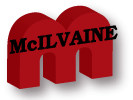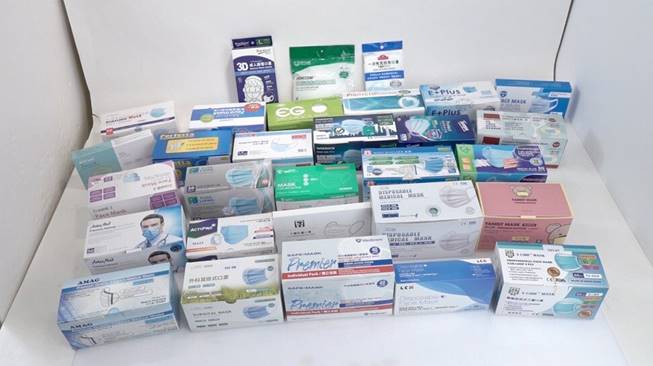
CATER Mask
Decisions
December 23, 2020
The Pandemic is Like a Football Game Where the
Head Covering is a Life and Death Decision
CATER 95 Mask Suppliers Have a Responsibility to
Provide Fit Testing Advice
Hong Kong Masks Performance Evaluated
____________________________________________________________________________
The Pandemic is Like a Football Game Where the
Head Covering is a Life and Death Decision
Most of the
regulations
now require wearing of masks. But this is
like saying every football player must wear a
head covering. The difference is that the risk
of death is much greater by wearing a less
protective mask than it is a less protective
helmet.
It is therefore of highest importance to
wear an efficient tight fitting mask.

ASTM is taking a big first step by preparing to
create standards based on 20% and 50%
efficiency. These proposed standards communicate
the important parameters and the methods by
which the level of protection is achieved. This
work and the ASTM 50 rating can be used for what
might be called the ASTM 50 plus rating.
One of the plus ratings would be CATER
95.
It would use all the tools and protocols set up
by ASTM but be able to demonstrate not only the
high efficiency but also the tight fit with
various face sizes.
CDC could provide information on reliable fit
testing procedures for
public masks. They can include use of the
same qualitative and quantitative fit testing
technologies required for industrial and medical
use.
But they would also provide advice on
frequency of testing and generic testing by mask
size.
CATER mask suppliers with five different mask
sizes are in a better position to provide low
leakage masks than are suppliers with just two
sizes. At one level suppliers should provide
leakage results through detailed testing
of each different size mask when applied to
appropriate face
sizes. This should include talking, walking,
bending etc.
(Practical Performance Tests on sample test
subjects).
Most masks are worn in such a manner that air
leakage is as much as 40% of the total exhaled.
The biggest challenge will be to create a system
which keeps leakage below 10%. If both emitter
and recipient have leakage limited to 10 % the
net virus transmission is only 1%.
Rating of net efficiency (capture
efficiency less leakage) will be useful. There
are CATER 95 masks with 95% efficiency and an
average of 4% leakage for a net efficiency of
91%.
The concept of CATER 95 bubbles is being
proposed. If everyone entering this bubble has a
CATER 95 or better mask then the school, fitness
center, or office building in the bubble could
operate normally.
It is proposed that fit testing for the public
be accomplished by one of the following
·
Existing industrial fit testing services with
mobile vans or
on site measurement capabilities
·
New groups of fit testers such as physical
therapists at fitness centers
·
Retail stores who can sell masks and provide
fitness testing and advice
·
Schools and large institutions
·
Local fit testing centers (could be the fitness
center or retail store)
It is further proposed that there be limitation
of entry to the bubble based on some sort of
proof (if only visual) that the individual is
wearing a properly fitted CATER 95 mask.
In the Alert yesterday we provided details on
the fitness centers and how they could reopen
and even generate extra revenue from fit
testing. We are forecasting that CATER Mask
sales will be greater than gym shoes, hoodies,
or for that matter any other clothing item.
So the department store with a shoe section to
help customers obtain the right shoes could
generate more revenues by helping people choose
the right mask.
CATER 95 Mask Suppliers Have a Responsibility to
Provide Fit Testing Advice
Consumer mask manufacturers should
provide clear instructions on how to
perform a Self-Fit Test: Here are the
instructions provided by Vogmask.
Place your fingers
on the cheekbones and thumbs on sides of
chin to do inhale and exhale fitting check.
"General use respirators are not fit tested in a
Workplace Safety Program, so it is recommended
that you self-check how the mask fits by this
method. In some regulatory regions, Vogmask is
fit tested on human test subjects to confirm
filtering efficiency under a variety of motions
such as walking, and talking, head side to side,
and head up and down.
-
Inhale slowly. Check to see if
the facepiece suctions slightly
towards your face. No air should
leak in between your face and
mask.
-
Exhale slowly. The facepiece
should be bulging slightly
outwards as exhale exits back
through facepiece.
-
Check again for leaks between
your face and the facepiece of
the respirator.
-
If you detect any leaks,
readjust the ear loops or head
straps and check again for fit.
-
If you cannot get a good seal
around nose and mouth, the mask
is not correct size and we
request you contact us.
Hong Kong Masks Performance Evaluated
An evaluation of masks available in Hong Kong
has valuable information but misses the mark
because it reports criteria of value to a
surgeon who wants to avoid blood spurts but does
not address the biggest factor which is mask air
leakage.
In tests on 30 models of surgical masks for sale
in the city, the consumer watchdog finds all but
one meets basic infection prevention standards
But 70
percent fall short in other measures relating to
bacteria levels, bodily fluid resistance and
comfort.
The vast majority of surgical masks on sale in
Hong Kong meet minimum standards for protecting
against infections, but 70 per cent of models
have flaws in other areas such as hygiene and
durability, according to a Consumer Council
study.
The watchdog’s findings, released on Tuesday as
the city battled its fourth
wave of Covid-19,
revealed high levels of bacteria on some
disposable masks, and one type did not reach
basic requirements for resisting bodily fluids.

The Consumer Council oversaw tests on 30
different types of surgical, single-use masks.
Photo: Handout
Pharmacy chain Watsons, owned by city tycoon Li
Ka-shing, was the most vocal of those disputing
the findings, insisting its masks attained the
highest American standards of protection. The
firm said it used the same laboratory as the one
commissioned by the council to perform the tests
but found discrepancies between both sets of
results.
All but one of the 30 models of single-use masks
that the council tested reached 95 per cent or
above for average
bacterial filtration efficiency (BFE) and
particle filtration efficiency (PFE).
By doing so they were judged satisfactory in
terms of guarding against infection, reaching the
basic level one requirement under the American
ASTM F2100 standard.
To obtain ASTM level two or three certification,
which is the top standard available, BFE
and PFE readings must hit at least 98 per cent.
The price of each mask ranged from HK$2 to HK$9,
with 18 marked as made in Hong Kong, eight in
mainland China, and others from Taiwan and
Vietnam.
The one model found in the study not to reach
level one for countering infections was produced
by Perfetta, a medical supplies manufacturer
from Vietnam. Its average PFE was only 86.64 per
cent, failing to meet ASTM level two as claimed
as well as falling far short of the most basic
standard for protective efficacy.
Lui Wing-cheong, vice-chairman of the council’s
research and testing committee, said in general
the masks sold in the city should be able to
offer basic protection to consumers for daily
use. However, he warned that 70 per cent of the
models performed poorly in other tests.
For example, three models were detected with
relatively high levels of bioburden, referring
to the number of bacteria living on a given
surface. The ear straps of about a third of the
models broke in stress tests, and one failed to
meet the level one resistance requirement
against penetration by bodily fluid.
“The council stresses that as face masks are
crucial daily necessities against the pandemic,
manufacturers should strictly monitor the
quality and ensure all important information on
the labelling is comprehensive and accurate, so
as to ensure the best protection to consumers,”
he said.
The tests showed the PFE readings on all five
samples from each of four models were lower than
the producers claimed. Two of those – from Tempo
as well as Perfetta
– also had a lower BFE than they had stated.
However, Lui noted instances of blood or bodily
fluid splashing on masks were relatively
rare in daily life.
For hygiene standards, the study showed 90 per
cent, or 27 models, met the European Union
standard for levels of coliform forming, which
is set at less than 30 units per gram.
The three models failing in this standard were
Artec Med, Pure Living and Powecom, which
recorded levels under the hygienic indicator
ranging from 41.7 to above 159.4.
According to the council, the 159.4 reading from
Powecom, from China, also exceeded the 100 limit
of its home country’s “bacterial detection
implement standard”.
